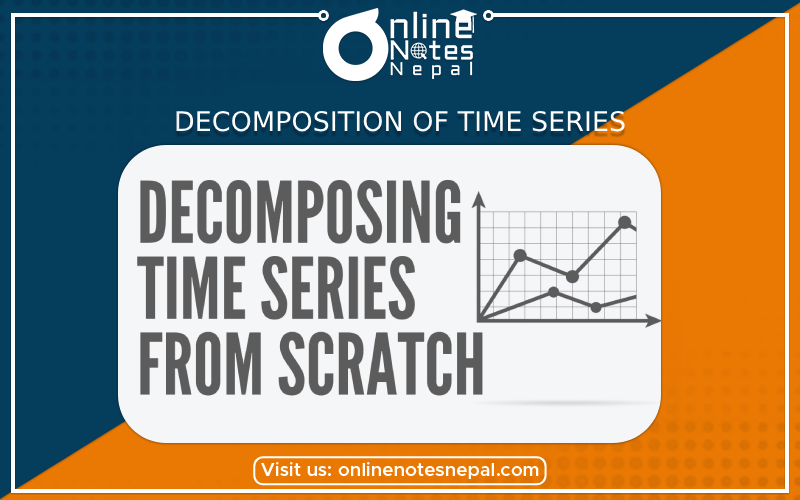Published by: Dikshya
Published date: 24 Jul 2023

Time series data represents a sequence of observations measured over time at regular intervals. Often, time series data exhibits different patterns and components, making it essential to decompose the data to understand and model these underlying structures. Decomposition of time series involves breaking down the data into its constituent parts, typically consisting of three main components:
Trend: The trend represents the long-term movement or direction of the time series. It captures the overall pattern and can be upward, downward, or relatively flat. A trend reflects the underlying growth or decline in the data over an extended period. For instance, a steadily increasing number of monthly sales over the years would indicate a positive trend.
Seasonality: Seasonality refers to the repetitive and predictable patterns that occur at fixed intervals within the time series. These patterns often correspond to specific time frames, such as daily, weekly, monthly, or yearly cycles. Seasonality can be influenced by factors like weather, holidays, or other recurring events. For example, retail sales may exhibit higher values during holiday seasons each year.
Residuals (or Noise): Residuals, also known as errors or noise, represent the random fluctuations in the time series data that cannot be attributed to the trend or seasonality. These fluctuations can be caused by various unpredictable factors, measurement errors, or other unknown influences. Residuals should ideally be random and centered around zero.
The decomposition of time series can be achieved using various methods, including:
Classical Decomposition: The classical decomposition method involves fitting a mathematical model to the time series data to estimate the trend and seasonality. One of the commonly used techniques for classical decomposition is the "additive" and "multiplicative" models.
Moving Averages: Moving averages are calculated to smooth out the time series data and extract the underlying trend. They can be computed using various window sizes to capture different levels of trends and seasonality.
Seasonal Decomposition of Time Series (STL): STL is a robust method that decomposes a time series into trend, seasonality, and residuals using a seasonal-trend decomposition algorithm based on loess. This technique is capable of handling irregularities and outliers in the data effectively.
Fourier Transform: Fourier transform can be used to identify and isolate the dominant frequencies representing seasonality in the time series data.
X-12-ARIMA: X-12-ARIMA is a seasonal adjustment program that decomposes time series data based on the ARIMA (AutoRegressive Integrated Moving Average) model and seasonal filters.
Once the decomposition is complete, analysts and data scientists can analyze each component separately, make predictions, identify anomalies, and model the data effectively.
Decomposition is an essential step in time series analysis and forecasting, as it provides valuable insights into the underlying patterns and helps in building accurate predictive models.